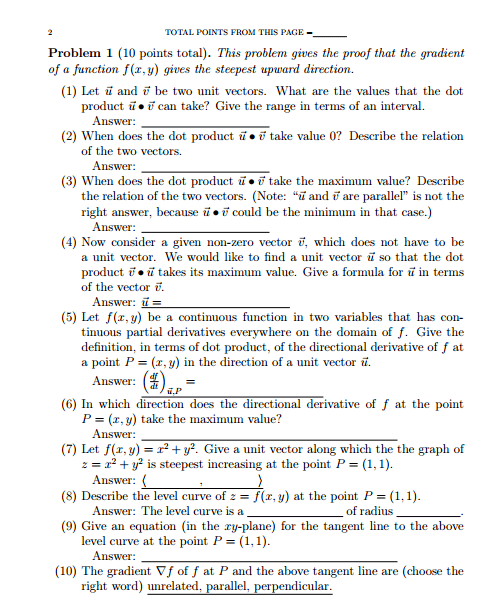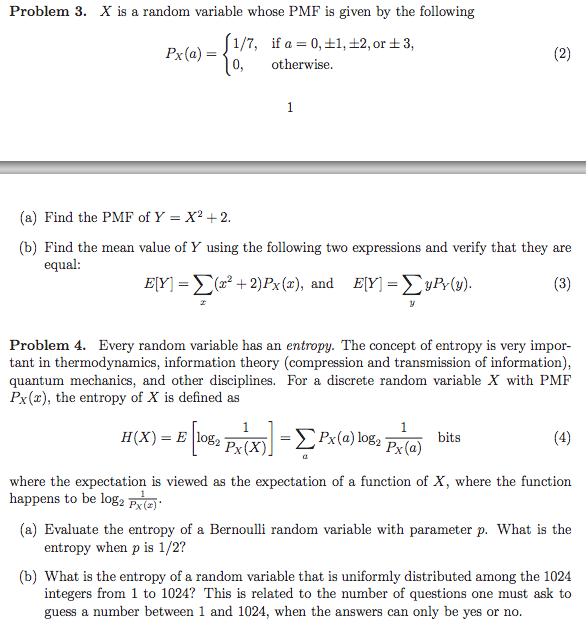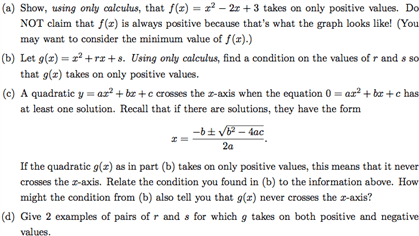Please provide work andexplanation

This problem gives the proof that the gradient of a function f(x, y) gives the steepest upward direction. Let and be two unit vectors. What are the values that the dot product can take? Give the range in terms of an interval. Answer: When does the dot product take value 0? Describe the relation of the two vectors. Answer: _______ When does the dot product take the maximum value? Describe the relation of the two vectors. (Note: " and are parallel" is not the right answer, because could be the minimum in that case.) Answer: ______ Now consider a given non-zero vector , which does not have to be a unit vector. We would like to find a unit vector so that the dot product takes its maximum value. Give a formula for in terms of the vector . Answer: = ______ Let f(x, y) be a continuous function in two variables that has continuous partial derivatives everywhere on the domain of f. Give the definition, in terms of dot product, of the directional derivative of f at a point P = (x, y) in the direction of a unit vector . Answer: (df/dt) , P = ______ In which direction does the directional derivative of f at the point P = (x, y) take the maximum value? Answer: _____ Let f(x, y) = x2 + y2. Give a unit vector along which the the graph of z = x2 + y2 is steepest increasing at the point P = (1, 1). Answer: , Describe the level curve of z = f(x, y) at the point P = (1, 1). Answer: The level curve is a _____ of radius
Show transcribed image text This problem gives the proof that the gradient of a function f(x, y) gives the steepest upward direction. Let and be two unit vectors. What are the values that the dot product can take? Give the range in terms of an interval. Answer: When does the dot product take value 0? Describe the relation of the two vectors. Answer: _______ When does the dot product take the maximum value? Describe the relation of the two vectors. (Note: " and are parallel" is not the right answer, because could be the minimum in that case.) Answer: ______ Now consider a given non-zero vector , which does not have to be a unit vector. We would like to find a unit vector so that the dot product takes its maximum value. Give a formula for in terms of the vector . Answer: = ______ Let f(x, y) be a continuous function in two variables that has continuous partial derivatives everywhere on the domain of f. Give the definition, in terms of dot product, of the directional derivative of f at a point P = (x, y) in the direction of a unit vector . Answer: (df/dt) , P = ______ In which direction does the directional derivative of f at the point P = (x, y) take the maximum value? Answer: _____ Let f(x, y) = x2 + y2. Give a unit vector along which the the graph of z = x2 + y2 is steepest increasing at the point P = (1, 1). Answer: , Describe the level curve of z = f(x, y) at the point P = (1, 1). Answer: The level curve is a _____ of radius






